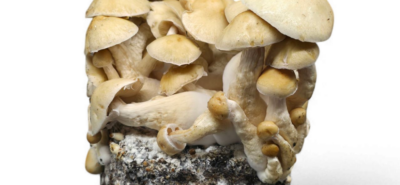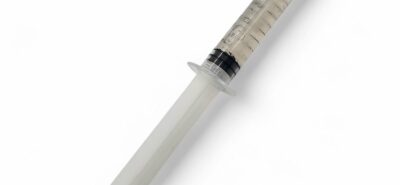Understanding the Role of Gypsum in Mushroom Substrate
Gypsum, a naturally occurring mineral composed of calcium sulfate dihydrate (CaSO4·2H2O), has long been valued in agriculture and construction for its versatile properties. Known for its soft texture and high calcium content, gypsum plays an important role in improving soil structure, reducing compaction, and enhancing water infiltration in farming applications. In construction, it’s widely used to make drywall and plaster products.
However, gypsum’s benefits extend far beyond these industries. In recent years, its application in mushroom cultivation has garnered significant attention from growers seeking to optimize their substrate formulations for better yields and healthier mycelium development.
Why Gypsum is Used in Mushroom Cultivation
The success of mushroom cultivation heavily depends on the quality and composition of the substrate—the nutrient-rich material that supports the growth of fungal mycelium. As fungi digest and colonize the substrate, they require a stable environment that supports both their nutritional needs and physical expansion.
Gypsum is added to mushroom substrates for several compelling reasons. It acts as a pH buffer, provides essential minerals like calcium and sulfur, enhances the physical properties of the substrate, and helps prevent contamination by reducing salt toxicity and suppressing harmful microbes. These combined benefits make it a staple amendment for both commercial and hobbyist mushroom growers.
Chemical Composition and Properties of Gypsum
At the molecular level, gypsum consists of calcium sulfate combined with two water molecules, making it a hydrated salt. Its chemical formula, CaSO4·2H2O, reveals its dual role as both a mineral source and a moisture-retaining compound. Importantly, gypsum is pH-neutral, meaning it doesn’t drastically alter the acidity or alkalinity of the substrate, unlike lime which raises pH significantly.
Its solubility in water is moderate, allowing it to slowly release calcium and sulfur into the substrate over time. This controlled release supports steady nutrient availability during the crucial early stages of mycelial colonization. Additionally, gypsum’s inert nature means it doesn’t chemically interfere with other substrate components, making it a safe and effective additive.
Enhancing pH Stability in Substrate
Maintaining a stable pH level in the substrate is crucial for successful mushroom cultivation. Fungi generally thrive in a slightly acidic to neutral environment, typically within a pH range of 5.5 to 7.5, depending on the species. A pH that is too low or too high can hinder mycelial growth, promote contaminants, or impair nutrient absorption.
Gypsum acts as an effective buffering agent in mushroom substrates. Unlike lime, which actively raises pH, gypsum stabilizes the pH by preventing dramatic swings. It achieves this by neutralizing small amounts of acidic or alkaline compounds that may form during substrate decomposition. This buffering capacity helps create an environment that supports consistent and vigorous mycelial colonization.
Improving Substrate Structure and Texture
Physical structure is just as important as nutrient content in mushroom substrates. Compacted or overly moist substrates can restrict air exchange and hinder the spread of mycelium. Gypsum helps counteract these issues by improving the texture of the substrate mix.
When added to materials like straw, sawdust, or coir, gypsum reduces clumping and promotes a crumbly, aerated structure. This improved porosity allows for better gas exchange, essential for healthy mycelial growth and development. Moreover, gypsum aids in moisture retention without causing waterlogging, striking the ideal balance between hydration and aeration.
Supplying Essential Calcium and Sulfur
Gypsum is a valuable mineral source, providing two key nutrients essential for mushroom health: calcium and sulfur. Calcium plays an important role in maintaining cell wall integrity, supporting enzymatic functions, and strengthening mycelial structure. It also helps mushrooms withstand environmental stress and resist certain types of contaminants.
Sulfur, though required in smaller quantities, is crucial for the synthesis of essential amino acids and proteins. It contributes to robust mycelial development and may influence the quality and yield of the mushroom fruiting bodies. By delivering both of these nutrients in an accessible form, gypsum contributes directly to healthier and more productive fungal growth.
Reducing Toxicity and Contaminants
One of the most underrated benefits of gypsum in mushroom substrates is its ability to mitigate potential toxicity and suppress microbial contaminants. During substrate fermentation or pasteurization, unwanted byproducts such as ammonia or soluble salts may accumulate, which can be harmful to mycelial growth.
Gypsum works by binding to excess salts and certain metal ions, thereby reducing their toxicity. This process is especially helpful when using manure-based substrates or recycled materials that may carry higher levels of contaminants. Additionally, the calcium in gypsum creates an environment that is less favorable for harmful bacteria and mold species, indirectly reducing the risk of contamination and improving overall substrate hygiene.
Optimal Ratios of Gypsum in Substrate Mixes
To maximize the benefits of gypsum without overdoing it, proper dosing is essential. A common recommendation is to add gypsum at a rate of 5%–10% by dry weight of the substrate material. This translates to approximately 50–100 grams of gypsum per kilogram of dry substrate, depending on the composition and intended use.
Different mushroom species may require slight adjustments in gypsum concentration. For example, oyster mushrooms tend to tolerate higher levels due to their aggressive mycelium, while more delicate species like shiitake may benefit from a more conservative approach. Always consider the specific needs of the mushroom species you are cultivating when calculating gypsum additions.
How to Add Gypsum to Mushroom Substrate
Adding gypsum to mushroom substrate is a simple but important step in the preparation process. It is typically incorporated during the initial mixing stage, before pasteurization or sterilization. For straw-based substrates, this means blending the gypsum thoroughly with the chopped straw and other components prior to soaking or heating.
Uniform mixing is key to ensuring even distribution of minerals and preventing pockets of excess concentration. When preparing sawdust or coir-based substrates, gypsum should be mixed while the material is still dry or slightly moistened. Use a clean container or mixer to achieve a consistent blend, which will promote better mycelial colonization and reduce contamination risk.
Gypsum in Different Substrate Types
Gypsum is a versatile additive that can be effectively used across various types of mushroom substrates. Each substrate type benefits differently based on its inherent characteristics and the fungal species cultivated.
Straw-Based Substrates
In straw-based substrates, gypsum plays a key role in preventing clumping, improving aeration, and stabilizing pH. It also enhances water retention, creating a more hospitable environment for fast-growing species like oyster mushrooms. This combination of benefits leads to faster colonization and improved yields.
Sawdust and Wood Chips
For hardwood-loving species like shiitake and lion’s mane, gypsum is often added to sawdust or wood chip substrates to provide essential calcium and improve moisture distribution. These substrates can be dense and retain water unevenly; gypsum helps prevent waterlogging and promotes uniform colonization.
Coco Coir and Manure Mixes
When using coco coir or manure-based substrates, gypsum helps to balance the pH and bind excess salts or ammonia, which are often present in these materials. It also supports microbial balance by reducing harmful bacteria, making it an ideal amendment for species like button mushrooms and portobellos.
Potential Drawbacks and Misuse of Gypsum
While gypsum offers many benefits, improper use can lead to unintended consequences. Over-application can cause an imbalance in mineral levels, particularly calcium, which may interfere with the uptake of other nutrients such as magnesium and potassium. Excessive gypsum can also lead to substrate compaction if not mixed thoroughly.
Another potential issue is using non-food-grade or contaminated gypsum, which could introduce harmful substances into the growing environment. It’s important to source clean, agricultural- or food-grade gypsum and use it in moderation to avoid negative effects on both substrate quality and mushroom health.
Gypsum vs. Lime in Mushroom Cultivation
Gypsum and lime are often mentioned together in the context of substrate preparation, but they serve different purposes. While gypsum is pH-neutral and provides calcium and sulfur, lime (usually calcium carbonate or hydrated lime) is used specifically to raise the pH of acidic substrates.
Choosing between the two depends on the specific requirements of your substrate and mushroom species. Lime may be necessary when the base substrate is too acidic, but for most purposes, gypsum is preferred because it improves structure and nutrient availability without altering pH dramatically. In some cases, both can be used together—lime to adjust pH and gypsum to supply minerals and enhance texture.
Sourcing and Storing Gypsum
When selecting gypsum for mushroom cultivation, it’s important to choose the right type to ensure safety and effectiveness. Agricultural gypsum and food-grade gypsum are the best choices, as they are free from contaminants and safe for use with edible crops. Avoid construction-grade products like plaster of Paris, which may contain additives or impurities unsuitable for organic cultivation.
Gypsum should be stored in a dry, cool location in an airtight container or sealed bag to prevent it from absorbing moisture and clumping. Keeping it dry preserves its consistency and makes it easier to measure and mix into substrates. Always label and date your supply to track freshness and avoid accidental misuse.
Scientific Research and Case Studies
Numerous studies support the inclusion of gypsum in mushroom substrates for enhanced yield, substrate quality, and contamination control. For instance, a 2018 study published in the Journal of Mushroom Science showed that gypsum-amended substrates improved oyster mushroom yield by up to 15% compared to control groups. The study also observed more consistent mycelial colonization and fewer instances of contamination.
Grower testimonials also highlight gypsum’s value in real-world cultivation. Small-scale and commercial mushroom farmers frequently cite gypsum as an essential component in their substrate recipes, especially when working with bulk substrates prone to clumping or salt accumulation. Its cost-effectiveness and multiple benefits make it a must-have additive in many successful operations.
Conclusion: Optimizing Substrate for Better Mushroom Growth
Gypsum is far more than a simple mineral additive—it’s a multifunctional component that can dramatically improve substrate performance and mushroom yield. From buffering pH and supplying vital nutrients to enhancing texture and reducing contaminants, gypsum supports every stage of mushroom development.
For growers aiming to boost their success, incorporating gypsum at the appropriate ratio is a practical, science-backed decision. By understanding how and why gypsum works in different substrate types, cultivators can optimize their methods and ensure healthier, more productive mycelial growth with every flush.
FAQs
Can I use plaster of Paris as gypsum?
No. Plaster of Paris is chemically altered gypsum (anhydrous calcium sulfate) and often contains additives unsuitable for mushroom cultivation. Always use agricultural or food-grade gypsum.
How much gypsum do I need per pound of substrate?
A common recommendation is 5%–10% of the dry weight. This is roughly 1 to 2 teaspoons per pound of dry substrate material, depending on the substrate type and mushroom species.
Does gypsum affect mushroom taste?
No, gypsum does not affect the taste of mushrooms. It is an inert mineral that supports growth without imparting any flavor or aroma to the final product.
Is gypsum organic?
Natural gypsum is considered organic by many certifying bodies, but it’s important to verify that the product is listed for organic use and free from synthetic additives or contaminants.
Can gypsum prevent contamination?
While gypsum doesn’t sterilize the substrate, it helps reduce the risk of contamination by binding excess salts and creating less favorable conditions for harmful microbes.





